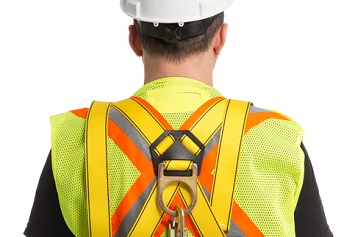Oregon has changed its fall protection requirements for construction employers. Make sure your supervisors are aware and your crews are in compliance.
 |
As of January 1, Oregon OSHA’s 10-foot (ft) trigger height for fall protection dropped to 6 ft. That means employers engaged in construction work must now use some form of protection to prevent employees from falling six feet or more to a lower level.
The 6-ft rule is not entirely new for Oregon construction contractors. It’s always been required for work on established floors, mezzanines, balconies, and walkways with unprotected sides and edges. And, says Oregon OSHA, many large commercial construction contractors have been using the 6-ft trigger, a federal OSHA requirement. Those most likely to be affected by the change are contractors with construction projects on single-family homes with a ground-to-eave height between 6 and 10 ft.
Another change regards slide guards. As of October 1 of this year, slide guards will no longer be permitted as a method of protecting workers from falling off sloped roofs. Federal OSHA no longer permits their use. State plan states (like Oregon) must adopt safety regulations that are at least as effective as the federal requirements.
Oregon OSHA reminds affected employers that their workers must be trained before they begin tasks that could expose them to falls, and before they use fall-protection equipment. As well, employers must document in writing that employees have been trained and that they know what systems or methods to use, how to use them, and when to use them, regardless of their experience.
